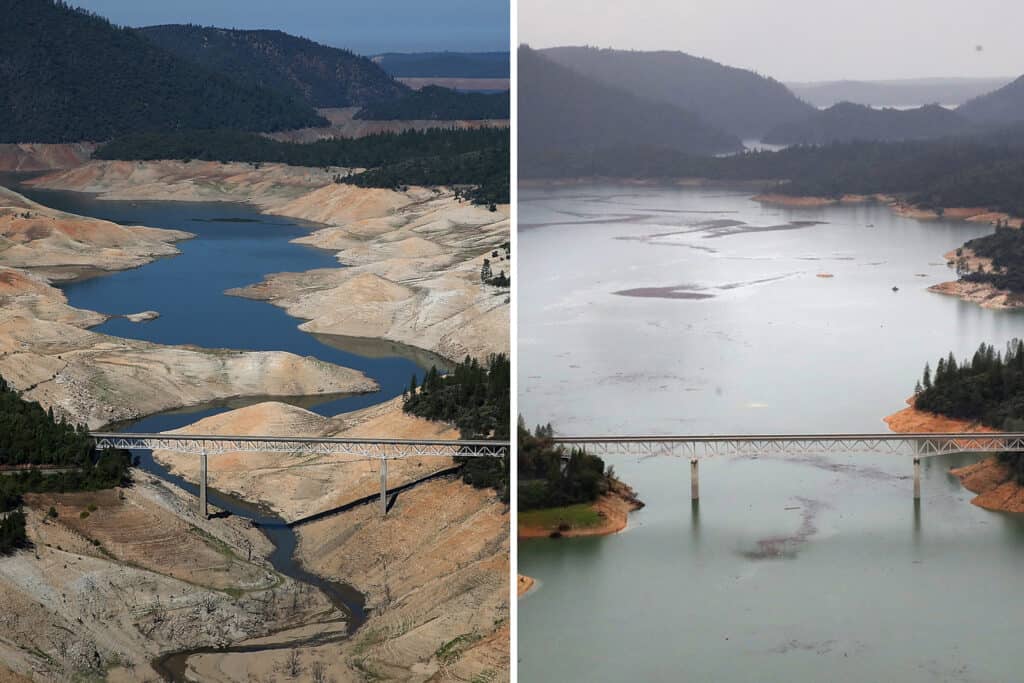There is no life without water. Human beings can survive up to three weeks without food, but only three days without freshwater. Now we are in a situation where freshwater scarcity is the biggest problem all over the world. California is suffering from an intense water crisis problem and facing drought conditions that cover more than 98% of the state as per the New York Times. The problem is likely to continue and grow over time.
California is encountering further complications such as increased wildfires, algae blooms, poor air quality, low vegetable harvests, dried wetlands, and not surprisingly, a water crisis. The Historical and ongoing droughts in California are likely caused by global warming, overpopulation, and Lack of Rainfall. According to NASA global climate change website, the IPCC’s Sixth Assessment report, published in 2021, found that human emissions of heat-trapping gases have already warmed the climate by nearly 2 degrees Fahrenheit (1.1 degrees Celsius) since pre-Industrial times (starting in 1750).1 The global average temperature is expected to reach or exceed 1.5 degrees C (about 3 degrees F) within the next few decades. These changes will affect all regions of Earth. Scientists predict global temperature increases from human-made greenhouse gases will continue. Severe weather damage will also increase and intensify, which leads to climate conditions that lead to drought with chronic low precipitation and higher temperatures.

In California, the agricultural sector is suffering the most because it is one of the largest producers of agricultural products and it is the major producer of a wide variety of nuts, fruits, and vegetables. California is the top exporter of agricultural products all over the world and contributes more than $20 billion to California’s economy.
As per USDA, California leads the country as the largest producer of agricultural products (crops and livestock), accounting for almost 11% of the national total revenue and is the main sector for employment generation.
The State of California official website stated that the last two years (2020 and 2021) were the second driest years since 1895, and the driest since the 1976-77 drought. Further, the situation is getting worse and 2022 possibly had the driest January, February, and March in over 100 years. Weather extremes likely brought on by climate change and population growth have reduced water supply.
Governor Gavin Newscom adopted various strategies and actions to achieve sustainability in the water supplies such as:
- The budget (2.8 billion)was tailored to meet immediate drought emergency needs for communities, fish, and wildlife while deepening and expanding state investments in climate-proof water systems around the state.
- Additional funding was raised for residential wastewater and water arrearages for the Low-Income Household Water Assistance Program administered by the Department of Community Services and Development and to support the California Small Agricultural Business Drought Relief Grant Program.
The governor also appealed to the residents to use less water and adopted new regulations to prohibit water waste in indoor, outdoor, and industrial use.
The State Water Board adopted new regulations to prohibit water waste by prohibited water waste in landscaping. Californians are also banned from using drinking water for activities such as filling decorative fountains/ponds, washing sidewalks and driveways, watering lawns during and right after the rain, and using hoses without automatic shutoff nozzles.
The California drought highlights the problems of agricultural lending throughout the country. Financial institutions that lend money to farmers face a wide array of risks including collateral valuation, repayment capacity estimation, and stability of water costs. The problem is especially acute for permanent plantings such as tree nuts.
